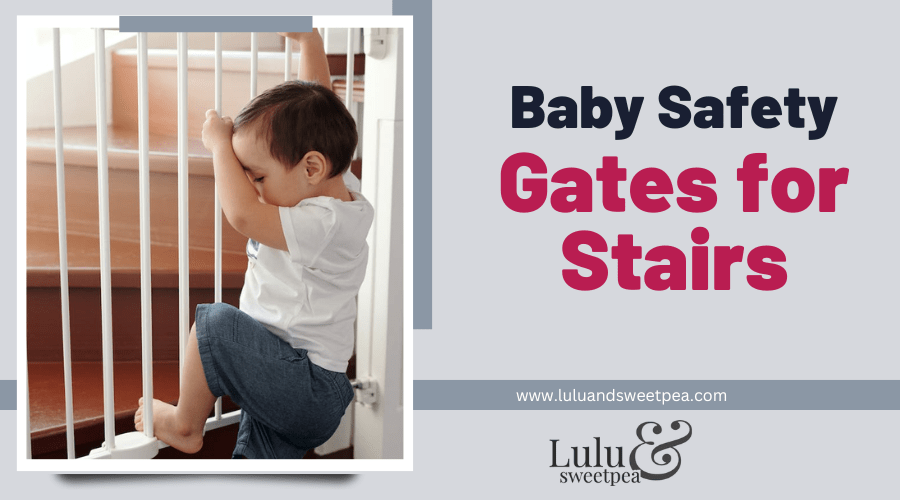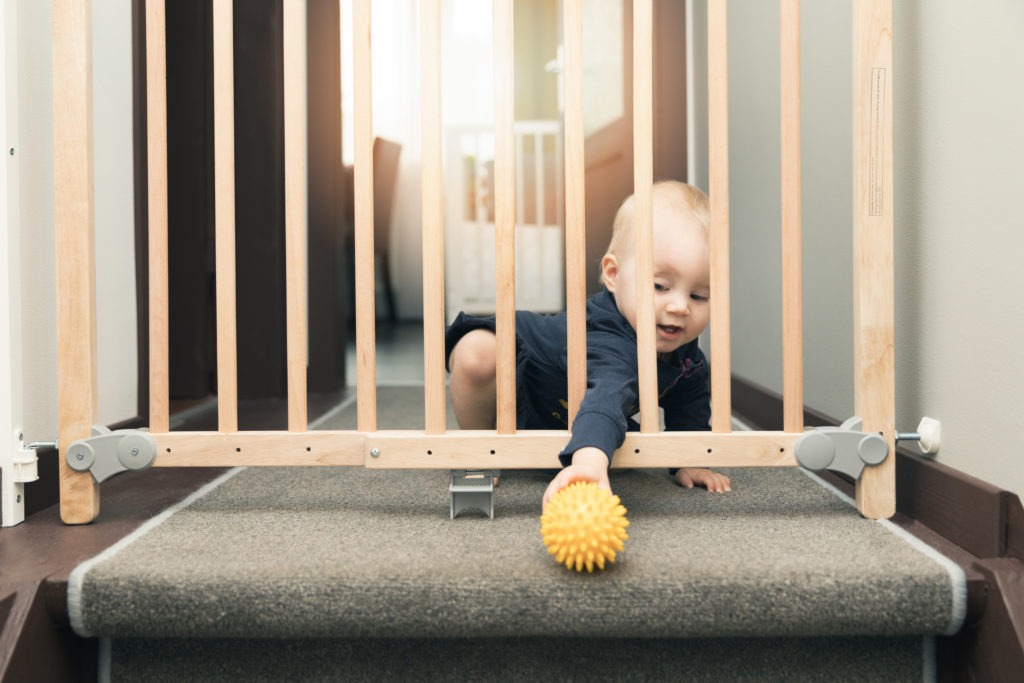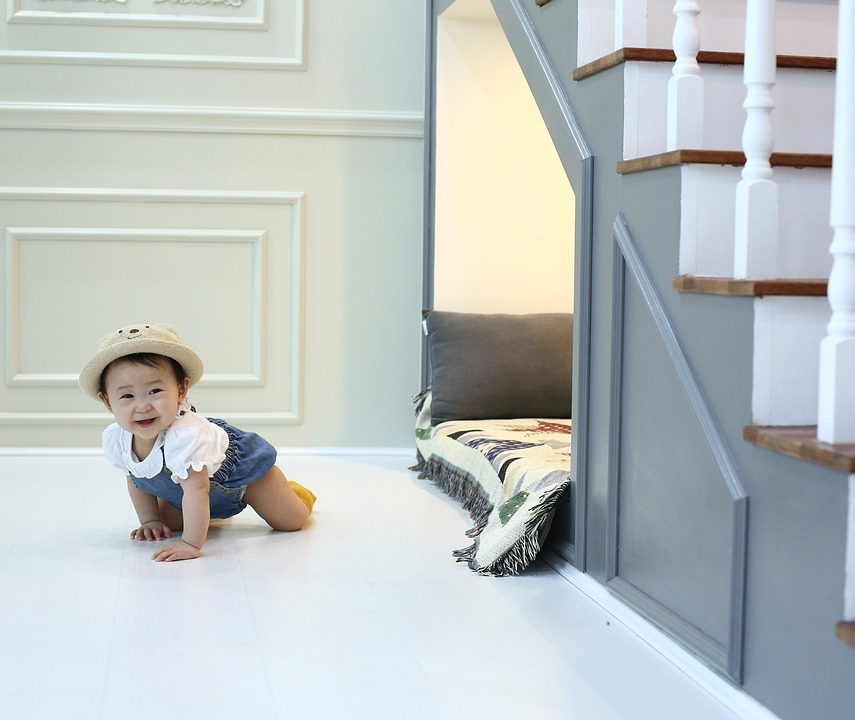When you have a baby, safety is of utmost importance. Therefore, when it’s time to childproof your home, you must choose the greatest baby gate. Baby gates are designed to separate off rooms and places to protect infants and toddlers from entering hazardous areas, such as staircases and kitchens. More than three million youngsters sustain an unintended household injury each year, ranging from steam and hot-liquid burns to falls and poisonings, according to statistics. A baby gate is, needless to say, an essential item.
Parents typically begin putting gates at the six-month mark, as the infant will soon begin to move and explore. Remember that children develop at varying rates, so use your best judgment when determining what would work best in your home.
Why is a child safety gate so important?
New parents can never be too cautious when it comes to childproofing their home. A child safety gate is one of the most crucial safety things they can possess.
Most residences contain staircases of varying types. A parent will want to make absolutely certain that young children do not have unsupervised access to these steps. In any case, this is exceedingly risky. A fall from the top of the stairs can result in severe injuries or even death. Because of this, a baby safety gate is an essential safety measure for every home. A safety gate provides a robust barrier at the bottom or top of your stairs, similar to a pool fence. This aids in preventing a crawling and climbing toddler from getting into danger.
Types of Baby Gates
Before selecting on the mounting and pass-through type, it is vital to evaluate where the baby gate will be placed. If you need stair gates or have an uneven surface, your best (and safest) option is a wall-mounted model. If you’re using the baby gate on a flat surface, such as a doorway, and you want something that’s easy to remove, a pressure-mounted baby gate is a good option. Here is a closer examination of the distinctions.
Hardware-mounted child safety gates.
Hardware-mounted baby gates are firmly fixed to the framework of your home’s walls. There is a bracket fitted into either the doorframe or the frame behind the walls to prevent the gate from falling over. Avoid screwing the baby-gate mount directly into the drywall or plaster, as this will not ensure stability. Every six minutes, a child in the United States is treated for an injury related to stairs, so it makes sense to locate the safest solutions available. Hardware-mounted varieties are regarded as the best baby gates for stairs because, when fitted correctly, they provide a far lesser risk of tipping over than pressure-mounted styles.
Pressure-mounted child safety gate.
Pressure-mounted baby gates utilize an expanding spring mechanism to secure the gate by squeezing it between two walls or other surfaces, creating pressure to hold it in place. Typically, there are rubber sections on both sides of the gate to assist keep it in place and protect your walls. Even the best pressure-mounted baby gate should not be used on any form of stairway, since it could tumble over if not securely secured. Instead, pressure-mounted baby gates are ideal for level and flat spaces, such as doors.
Step-over and walk-through gates.
Walk-through gates, or baby gates with a doorway or open-and-close mechanism, are preferable to gates that require you to walk over them, as they eliminate the risk of tripping and falling. Step-over gates can be useful when traveling or when a temporary solution is required; nevertheless, walk-through gates are superior and safer in most other instances.
What should be considered before purchasing a baby gate?
Safety.
Ineffective babyproofing if the baby gate you use is not a safe device. When searching for baby gates, keep an eye out for Juvenile Products Manufacturers Association (JPMA) certification, which assures the gate fulfills the highest safety criteria (such as a minimum height of 22 inches and the capacity to withstand 30 pounds of push-out force). Additionally, be aware of any recalls.
Height.
Those with taller children will want to keep an eye out for extra-tall baby gates, which can have heights of up to 36 inches for added safety.
Material.
Baby gates are available in a number of materials, including metal, mesh, and wood. Depending on your demands, each has distinct advantages. Metal is the easiest material to clean, whereas mesh provides a good view of your child on the other side. Wood is both durable and visually appealing.
Location.
Consider where you will install the baby gate in your home, since this may impact your choice of product. For safety purposes, baby gates used at the bottom or top of stairs must be hard-mounted, whereas those used to block off hallways or doors can be pressure-mounted. If it’s a high-traffic area, opt for a gate with a doorway pass-through; areas that need remain closed off, such as a fireplace, can have a more closed-off design.
Portability.
If you need a baby gate to travel with or take to a friend’s or relative’s home, search for a pressure-mounted gate that folds or collapses for easier transport.
Aesthetics.
Baby gates in your home need not be an eyesore. There are a variety of sleek and fashionable options, ranging from barn door styles to ultramodern designs.
Extra Considerations to Bear in Mind
When it comes to keeping toddlers away from your staircase, things may become a bit complicated. In such cases, we propose installing a baby gate at both the top and bottom of the steps.
Additionally, be aware of any other devices that a child could use to scale the fence. Children are far more resourceful than most adults credit them with being. To ensure the highest level of safety, examine thoroughly to ensure that there is nothing nearby that a young child could use to climb over the safety gate.
While we’re here, remember to plan ahead. You should install your baby’s safety gates between five and six months of age. Ideally, this should occur prior to the infant learning to crawl and walk.
Dismantling a Safety Gate
Most residences contain staircases of varying types. A parent will want to make absolutely certain that young children do not have unsupervised access to these steps. In any case, this is exceedingly risky. A fall from the top of the stairs can result in severe injuries or even death. Because of this, a baby safety gate is an essential safety measure for every home. A safety gate provides a robust barrier at the bottom or top of your stairs, similar to a pool fence. This aids in preventing a crawling and climbing toddler from getting into danger.
When should I remove the safety gate? As you may have guessed, each case will differ significantly. We recommend leaving the gate in place until you are totally certain of your child’s ability. Test and retest their ability to ascend and descend stairs. Typically, you will begin to consider this step when the child is around three years old, but it will depend on your child’s specific circumstances.
To summarize
Baby gates all provide the same function, although they do it through a variety of design strategies. Subtle changes in shape and function render some cumbersome and others less cumbersome. However, the greatest baby gates are extremely secure, simple for adults to use, and hard for infants to climb, push down, or twist open.



